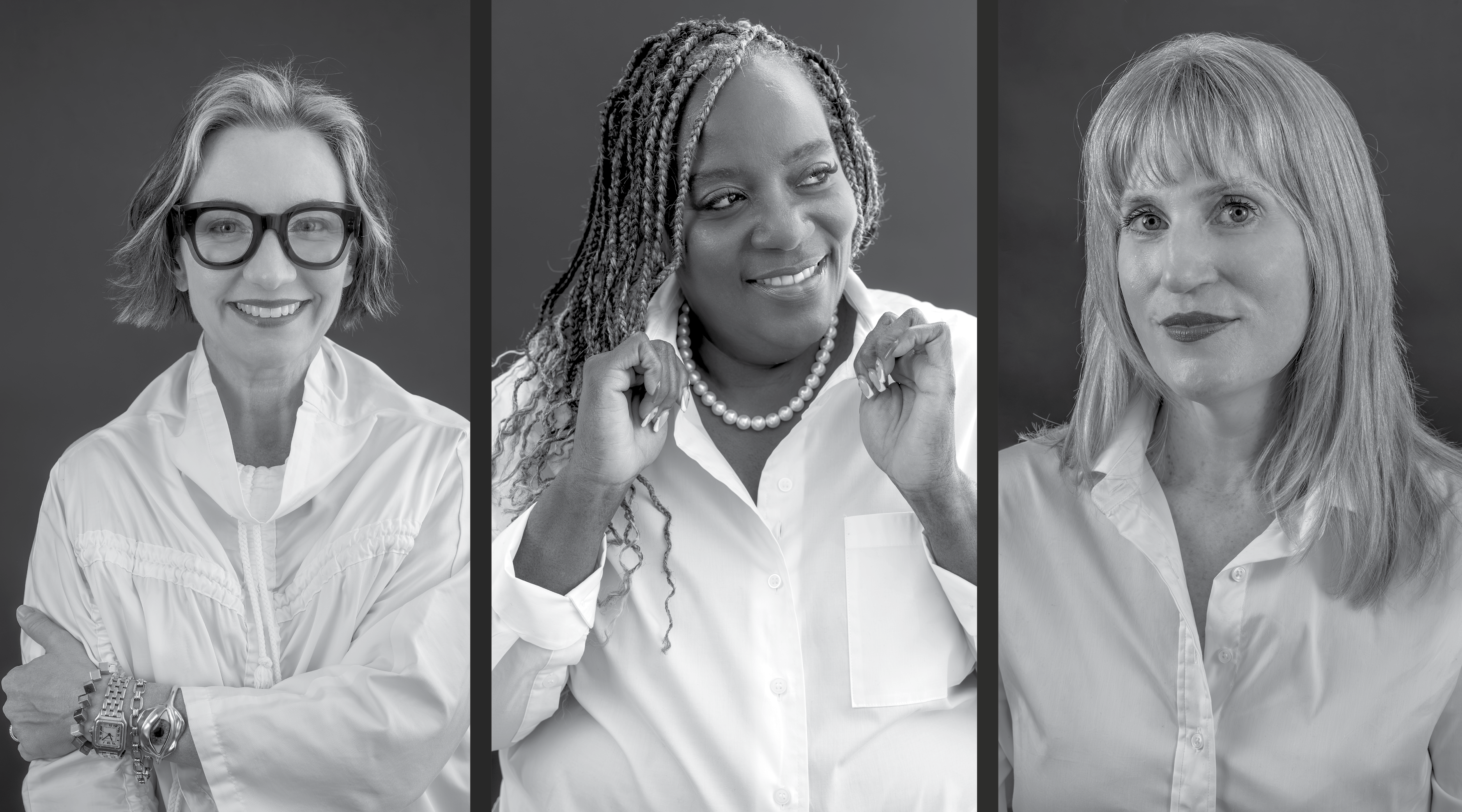
Embracing the gray can reveal your best self
By Jenny B. Davis
Photography by Olaf Growald
Last summer, I returned home from a long vacation in Europe with an unexpected souvenir: a thin strip of white stretching down the part in my hair. I’d been dying my hair since college, and now that I was firmly over 50, I suspected my natural shade was somewhere on the silver spectrum, I just hadn’t had an occasion to see it yet. Now, after seven weeks away from my salon, I could officially verify its existence, and I had a decision to make. Should I scurry back to brown or go the way of the gray?
We live in a youth-dominated culture, and ageism is real. I did worry gray hair would mark me as old faster than wearing an “OK Boomer” slogan T (as if wearing a slogan T wasn’t boomer enough). Not that I was fooling anyone — my reading glasses were likely an instant giveaway, and necks never lie.
My mind kept going back to the French women I’d seen all summer who made the natural markers of middle age look impossibly chic. And I had to admit, the thought of breaking free from my expensive and time-consuming monthly root touch-ups brought me joy. I decided to go for it, and I made an appointment with Monte Feagin, aka “The Color Pusher,” at Hair+Industry salon in Dallas for a service called a “gray conversion.”
In a gray conversion, Feagin replicates the natural pattern of the emerging salt-and-pepper throughout the entire head to achieve a natural gray pattern that eases the abrupt transitions inherent in the growing-out process.
But it’s not an easy undertaking. It’s time-consuming (my service took an entire day) and it’s not always a one-and-done situation. Often, a touch-up or two is necessary to keep the hair looking cohesive as it grows out. But Feagin says his clients are always happy with their decision. “There’s a lot of beauty in simplicity,” he says.
Going gray started trending during the pandemic when women couldn’t visit the salons. Although it didn’t start as a choice, it soon became such a popular look that it even trickled down to women in their 20s who were decades away from any natural gray, says Kenzie Pardon, a Redken Artist at Shelley’s Hair Body & Skin in Belton.
Dr. Kim Linnear, 53, started to notice gray hair emerging about six or seven years ago. She briefly thought about leaning into it, but ultimately colored over it.
“Someone told me, ‘You’re too young to go gray,’ and I thought, ‘Oh, so there must be an age when you can do it,’” she says with a laugh.
Last summer, however, she decided that whatever that age was, she’d reached it. “I was so tired of coloring my hair,” says Linnear, executive director of grants at Tarrant County College and a public health adjunct professor at the University of Texas at Arlington. “I decided it was time for me and Mrs. Clairol to break up.”
Linnear’s decision was confirmed when she attended a conference and sat behind a woman who was overdue for a root touch-up. Linnear found herself staring at the woman’s visible roots and thinking about how that could easily be what her own hair looked like. She immediately called her stylist to ask for gray in her braids to begin the conversion.
“I feel like there’s so much less stress in my life now,” she says. “I’m glad I realized that going gray isn’t about an age, it’s about a decision.”
Anne Maddox is also ecstatic about her gray conversion. The 49-year-old flight attendant calls it “one of the best decisions I’ve ever made.”
A natural strawberry blonde who often enhanced her red tones, Maddox noticed she had some gray coming in and didn’t hate the look. She went to Goldwaves Salon in Fort Worth for a series of high and low lights designed to enhance the emerging silver strands.
Now a few years into her newly natural hair, she feels like she has one less responsibility to deal with, allowing her to spend more time with her four daughters. “I love never having to think about my hair,” she says. “Plus, it’s one less bill.”
What she hasn’t had to give up, however, are compliments. “People compliment me on my hair all the time,” she says. “When I tell them it’s totally natural, they’re always surprised — they say, ‘I can’t believe you don’t have to pay for that.’“
KNOW BEFORE YOU GO
Thinking about a gray conversion? It’s best to wait at least three months so the stylist has about an inch and a half of grow-out to work with, says Monte Feagin, a color specialist at Hair+Industry in Dallas.
He also recommends scheduling a consultation with the stylist before booking the appointment, just to understand the process. And because lifting darker-colored hair to lighter shades of gray can be damaging, Feagin suggests applying an at-home hair mask before the appointment. Look for a mask that strengthens and repairs (he likes the K18 leave-in molecular repair hair mask).
Using the right products is also important after the service, says Kenzie Pardon, a Redken Artist at Shelley’s Hair Body & Skin in Belton.
She recommends Redken’s Blondage High Bright shampoo and conditioner and treatment to maintain brightness and the Redken Icy Mask, which eliminates mineral build-up and neutralizes orange and yellow shades that can tinge gray hair over time.
